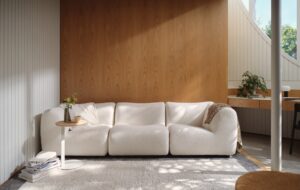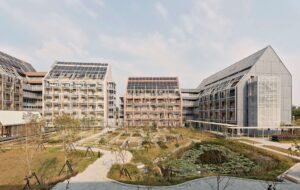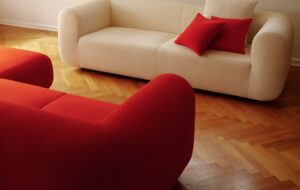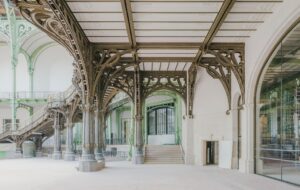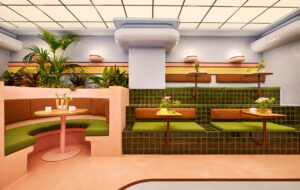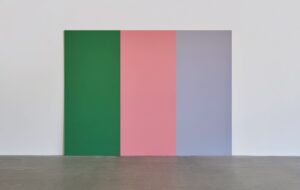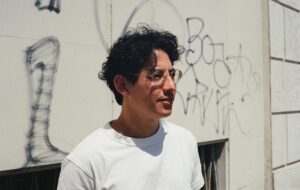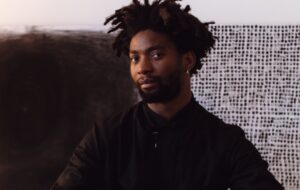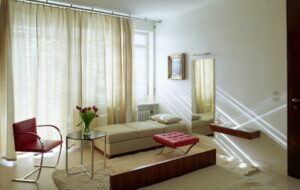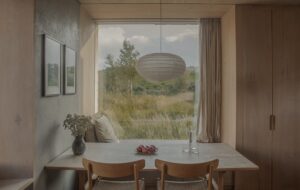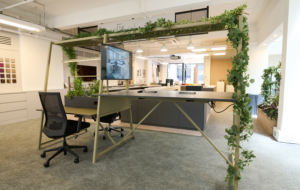|
|
||
|
Take a walk around some of London’s lesser-known green spots this spring and you might find there’s something strange going on in the trees. Curious conglomerations of wooden birdboxes have appeared at Duncan Terrace Gardens, Islington and Cremorne Gardens, Chelsea – not the work of some architecturally-obsessed visiting bird species, but the latest project by artists Jo Joelson and Bruce Gilchrist, collectively known as London Fieldworks. Spontaneous City was commissioned in July 2010 by Up Projects as a way to encourage activity in London’s small parks. “We were invited to work with council conservationists to create an architecture accessible for birds,” says Joelson. At Cremorne Gardens, the artists were inspired by the dominant towers of the World’s End estate, isolating the frontage of an individual flat and reproducing it at varying scales as the basis of the installation. It is a method commonly used in nest-making. Gilchrist explains: “Small-brained creatures can create structures of incredible complexity by being programmed to repeat the same process. But there are slight variations and iterations in their collective output. That’s where the methodology comes from.” The boxes accommodate the trees’ shape by way of a rubber substructure. “It’s like a big rubber corset that goes around the tree so nothing is screwed directly to the bark,” says Joelson. “The tree can grow underneath for several years and I guess then it will all eventually pop off.” Designed to last between one and three years, the project caters to the communal nesting habits of sparrows, a species that has declined 62 per cent in London. “We see it as a metaphor for voidance,” says Gilchrist. “It functions as an allegory of population crash and dwindling biodiversity.” Starting with the basic language of the common birdbox, London Fieldworks has bred a rich culmination of ideas: subtle nods to the imbalance of urban development and ecology at local and global scales. Duncan Terrace Gardens is edged by Georgian terraces and a block of 1960s council housing: a situation of opposing demographics that reminded the artists of gated communities they saw shunted up against slum housing in Brazil and Bangalore. “The fortified development and the unregulated building style of the shanty,” muses Gilchrist. “It manages to say something about both. I think you can see that in the aesthetic of the thing.”
These are some big issues for little boxes to take on. Spontaneous City’s complex suggestions expand on themes from the 2008 project Super Kingdom, a Stour Valley Arts commission for King’s Wood, Kent where London Fieldworks created three birdhouse structures based around despotic architecture. Stalin’s Palace of Science and Culture in Warsaw, Mussolini’s Colosseo Quadrato and Ceauşescu’s Palace of the People in Bucharest were all re-imagined in slightly distorted form: a comment on nature’s food chain power struggles and the parallel with human politics. “We knew there were buzzards over-wintering in Kent and we imagined, pretty theatrically, that the inverted Stalin’s palace could function as a roost for a big predator bird like that,” says Gilchrist. “They’re showhomes for animals.” Borrowing real-estate language, they sought to spin a fictional narrative for Super Kingdom that involved animals displaced by nearby urban development in Ashford taking up residence in the palaces. Intended more as sculptures than proposals for actual inhabitation, the structures have nonetheless been taken to by the local wildlife. “There’s great tits in the Mussolini, wood pigeons in the Ceauşescu, and spiders and caterpillars were moving into the smaller boxes almost immediately,” says Gilchrist. Outlandia, a project completed in September 2010 for the Highland Council, was London Fieldworks’ chance to escalate its thinking to a larger scale. Working with Malcolm Fraser Architects, it built a studio in Glen Nevis, Scotland: a place for artists to work and be immersed in the landscape. “It’s a piece of iconic Highland landscape with all its inherent contradictions,” says Joelson. “Tourism, industry, ancient nature, the pressure to function as an area of outstanding natural beauty.” Inspired by the architecture of wildlife hides, there’s already a pleasing dialogue emerging between Outlandia and the birdhouse projects – a who’s-looking-at-who scenario that fits with their concern for intersecting social and natural worlds. “I suppose you’ve got animal residency on the one hand and human residency on the other,” says Gilchrist. “Maybe we subconsciously interpret these birdboxes as a metaphor for the human condition being played out through the animal one.”
|
Image London Fieldworks
Words Riya Patel |
|
|
||


